 Abraham Lincoln
If given the truth, the people can be depended upon to meet any national crisis...
Abraham Lincoln
If given the truth, the people can be depended upon to meet any national crisis...
 Guildford news...
for Guildford people, brought to you by Guildford reporters - Guildford's own news service
Guildford news...
for Guildford people, brought to you by Guildford reporters - Guildford's own news service
University of Surrey’s Impressive Collection of 2,800 Trees
Published on: 8 Nov, 2020
Updated on: 11 Nov, 2020
By Hugh Coakley
Visitors to the University of Surrey will often be struck by how built up the campus is.
But the 33 hectare Stag Hill campus, bounded by the A3, the railway and Guildford Cathedral, has some lovely parkland and open vistas as well as a collection of more than 300 different trees species and around 1,500 trees.
In total, there are around 2,800 trees on the 120-hectare university estate over its five sites around Guildford, said horticultural and landscape manager, Simon Smith.
That is a formidable number of trees and Simon seemed to be able to name them all, generally with a botanical name but more often than not, with the common name as well.
“It’s not surprising I know them,” he said with a laugh, “I have been involved in planting most of them.”
He talked constantly about individual trees and plants as we walked around the Stag Hill campus together. He has seen the trees, and the campus, grow over the 39 years he has been with the university, all his working life.
He said: “As a measure of how the campus has been built up, it used to take us five days to do the grass mowing, it now only takes two days.”
Surprisingly, biodiversity was not high in the priorities of what to plant and where, but Simon says this is changing. “We were a manicured site four or five years ago but we are more aware now. We let hedges grow more. Bat boxes and bee hotels for example, are all part of our thinking now.”
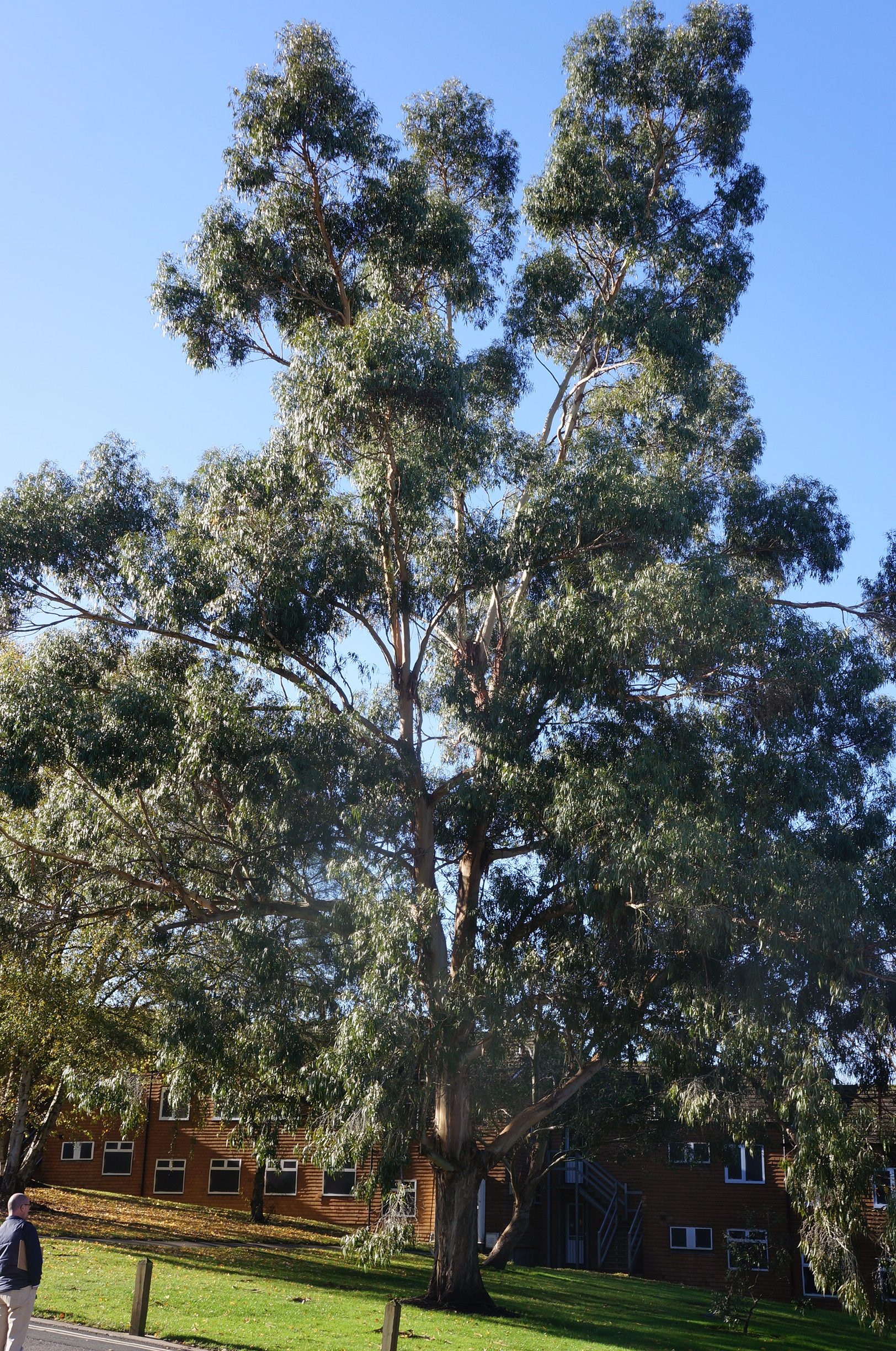
“It is great to see the trees mature,” said Simon Smith. This eucalyptus was planted in the 1980s and is now about 30m tall.
Around 50 birdboxes have been placed on the site and Surrey is one of 23 universities to be awarded bronze accreditation as a hedgehog friendly campus by the British Hedgehog Preservation Society.
Simon said the university also won a silver award last year for Best Site for Nature Conservation in the Guildford in Bloom awards.
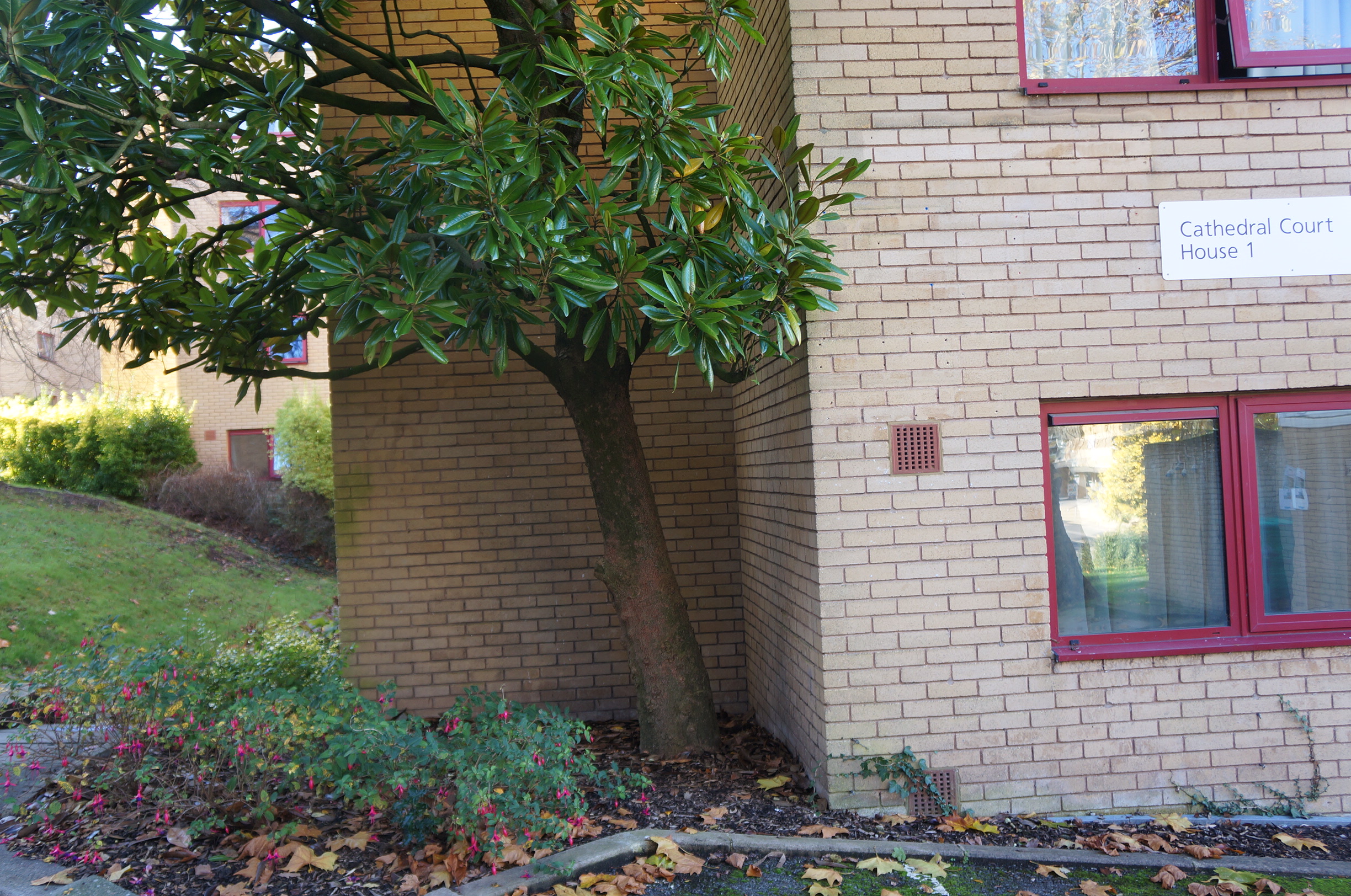
One that got away. This magnolia was planted in the 1970s as a shrub. It isn’t causing any damage and has been allowed to flourish in a tight space next to a building.
Simon and his colleague Ian Main lead the staff of about 20 groundsmen for the university. It is a varied job from grounds maintenance, external pest control, wildlife, and trees, trees, trees. “I love the challenge. Every day is different,” Simon said.
It is very technical work with 60 irrigation points monitored on a regular basis to ensure water or time isn’t wasted and trees are surveyed yearly by an arboriculturalist as part of the ongoing management.
The university has just produced a tree management strategy document which will help the team focus their efforts.
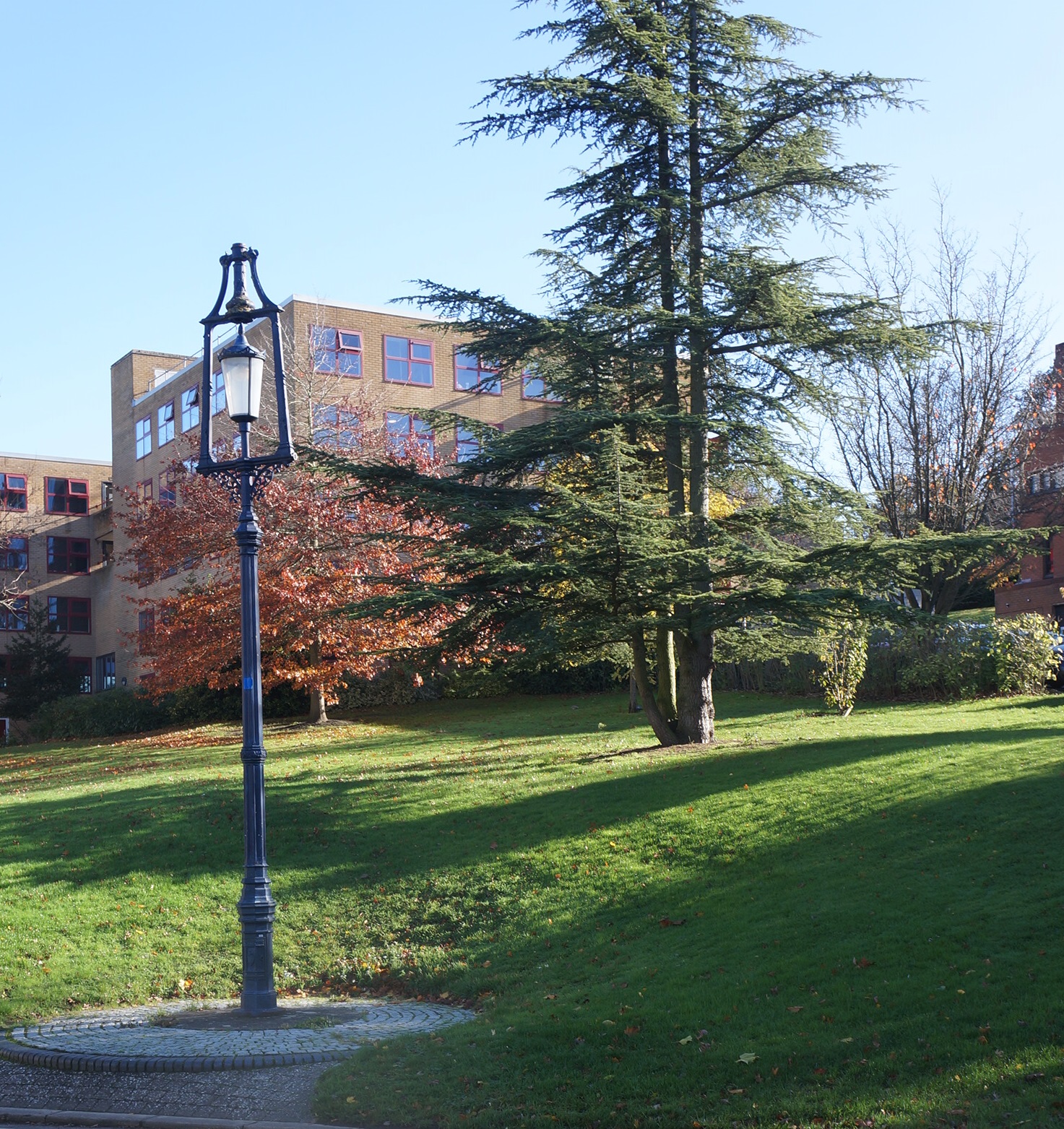
The lamp-post is the only surviving external relic of Battersea Polytechnic after it moved to Guildford in 1962. A mature cedar of Lebanon stands guard behind it.
Trees can touch us emotionally. Four people have their ashes buried under trees on the campus. Rabbi Alex Goldberg, the Jewish chaplain on the campus, emailed the team after an olive tree was planted outside the Jewish Common Room on Holocaust Day this year, saying: “I can’t right now think of a more poignant or moving memorial.”
There is a lot of care given to the trees on Stag Hill and they look to my untutored eye to be in wonderful condition.
Simon was proud to be able to say that one of the trees, a glyptostrobus pencilis, was judged to be a national champion of its species by The Tree Register of Britain and Ireland.
That morning, an arborist from Westonbirt, the National Arboretum, had been around to collect seed from the special plant. What an accolade!

National champion tree, glyptostrobus pencilis, planted in the 1970s near the bottom pond. An arborist from Winkworth Arboretum has gathered seeds from the special tree.
Like the trees themselves, there is a history behind the grounds team. Simon was keen to name his predecessors, the original groundsman Terry Bennett and Simon’s old boss, Nigel Hodge, and to acknowledge their work in the success of the current campus landscaping.
Could Stag Hill be thought of as an arboretum, I asked Simon naively.
“Unofficially I think it is. I would love for it to be better recognised.
“Maybe we can just call it a tree collection,” he said modestly.
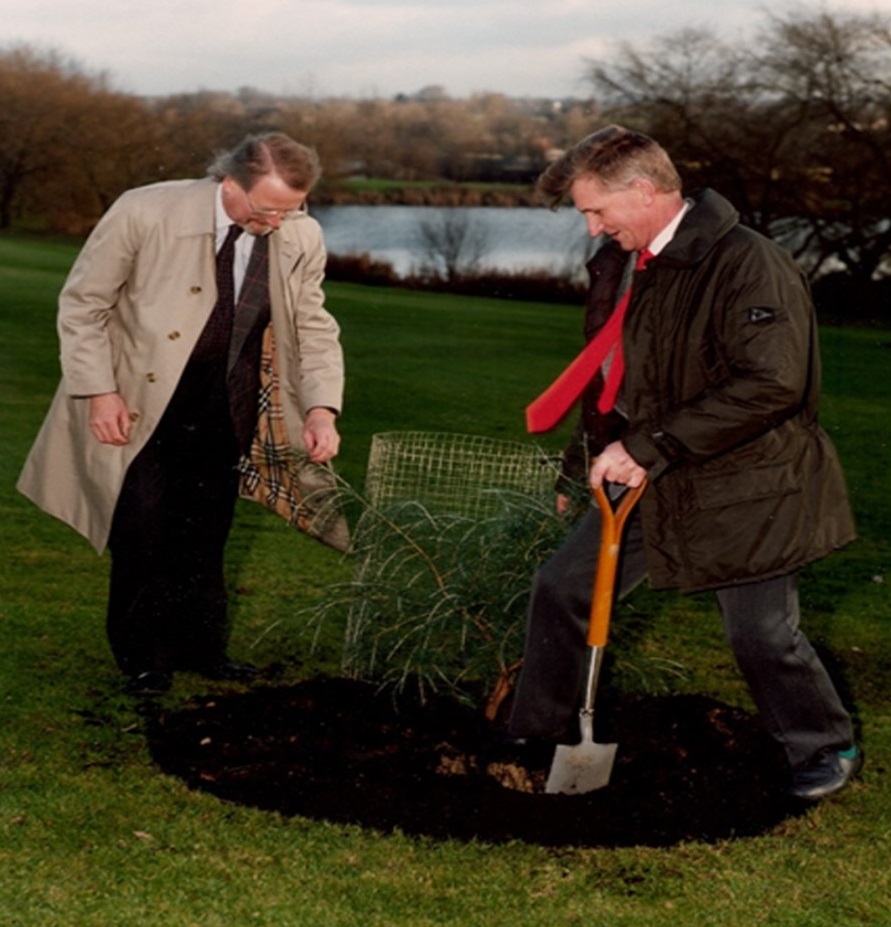
The first groundsman at the university, Terry Bennett (with the red tie), at his retirement planting a tree with the university’s then vice-chancellor, Professor Antony Kelly.
Responses to University of Surrey’s Impressive Collection of 2,800 Trees
Leave a Comment Cancel reply
Please see our comments policy. All comments are moderated and may take time to appear. Full names, or at least initial and surname, must be given.Recent Articles
- Dragon Review – Sherlock Holmes: The Hunt for Moriarty – Yvonne Arnnaud Theatre
- Delays to Report on Housing Revenue Account Scandal Criticised by Scrutiny Committee
- Notice: German Mini Christmas Market – November 30
- Police Smashed Roofing Scam After Rogue Workers Got Away With Thousands
- Story of ‘Jessie’s Seat’ Topiary Railway Memorial to a Guard Killed at this Spot near Chilworth
- Birdwatcher’s Diary No. 339
- Tongham and Normandy Are Both Facing a Possible Housing Boom
- Dragon Review: Buddy – The Buddy Holly Story – Yvonne Arnaud Theatre
- Good Design Rewarded – Co-Living Development Scoops Overall Winner Prize
- Challengers Get Set To Launch Their Big Christmas Campaign



Recent Comments
- roger kendall on Birdwatcher’s Diary No. 339
- Robert Jennings on Memories Of Queen Elizabeth Barracks And The Women’s Royal Army Corps
- Julie Howarth on Biddles – A Guildford Business for 140 Years Today
- RWL Davies on No Promise of A Mayor for Surrey
- John S Green on ‘Disaster in the Making’: Residents React with Anger and Distrust
- Amari Hawthorne-Bailey on Memories Of Queen Elizabeth Barracks And The Women’s Royal Army Corps
Search in Site
Media Gallery
Cllr Townsend on Waverley’s CIL Issue
August 27, 2025 / Comments Off on Cllr Townsend on Waverley’s CIL Issue / Read MoreMP Zöe Franklin Reviews Topical Issues
August 27, 2025 / Comments Off on MP Zöe Franklin Reviews Topical Issues / Read MoreMP Hopes Thames Water Fine Will Be ‘Final Nail in Its Coffin’
August 27, 2025 / Comments Off on MP Hopes Thames Water Fine Will Be ‘Final Nail in Its Coffin’ / Read MoreNew Guildford Mayor Howard Smith
August 27, 2025 / Comments Off on New Guildford Mayor Howard Smith / Read MoreA New Scene for a Guildford Street
August 27, 2025 / Comments Off on A New Scene for a Guildford Street / Read MoreDragon Interview: Sir Jeremy Hunt MP on His Knighthood and Some Local Issues
August 27, 2025 / Comments Off on Dragon Interview: Sir Jeremy Hunt MP on His Knighthood and Some Local Issues / Read MoreDragon Interview: Paul Follows Admits He Should Not Have Used the Word ‘Skewed’
August 27, 2025 / Comments Off on Dragon Interview: Paul Follows Admits He Should Not Have Used the Word ‘Skewed’ / Read MoreDragon Interview: Will Forster MP On His Recent Visit to Ukraine
August 27, 2025 / No Comment / Read MoreDragon Interview: Fiona Davidson on the ‘Devolution’ Proposals for Surrey
August 27, 2025 / No Comment / Read More



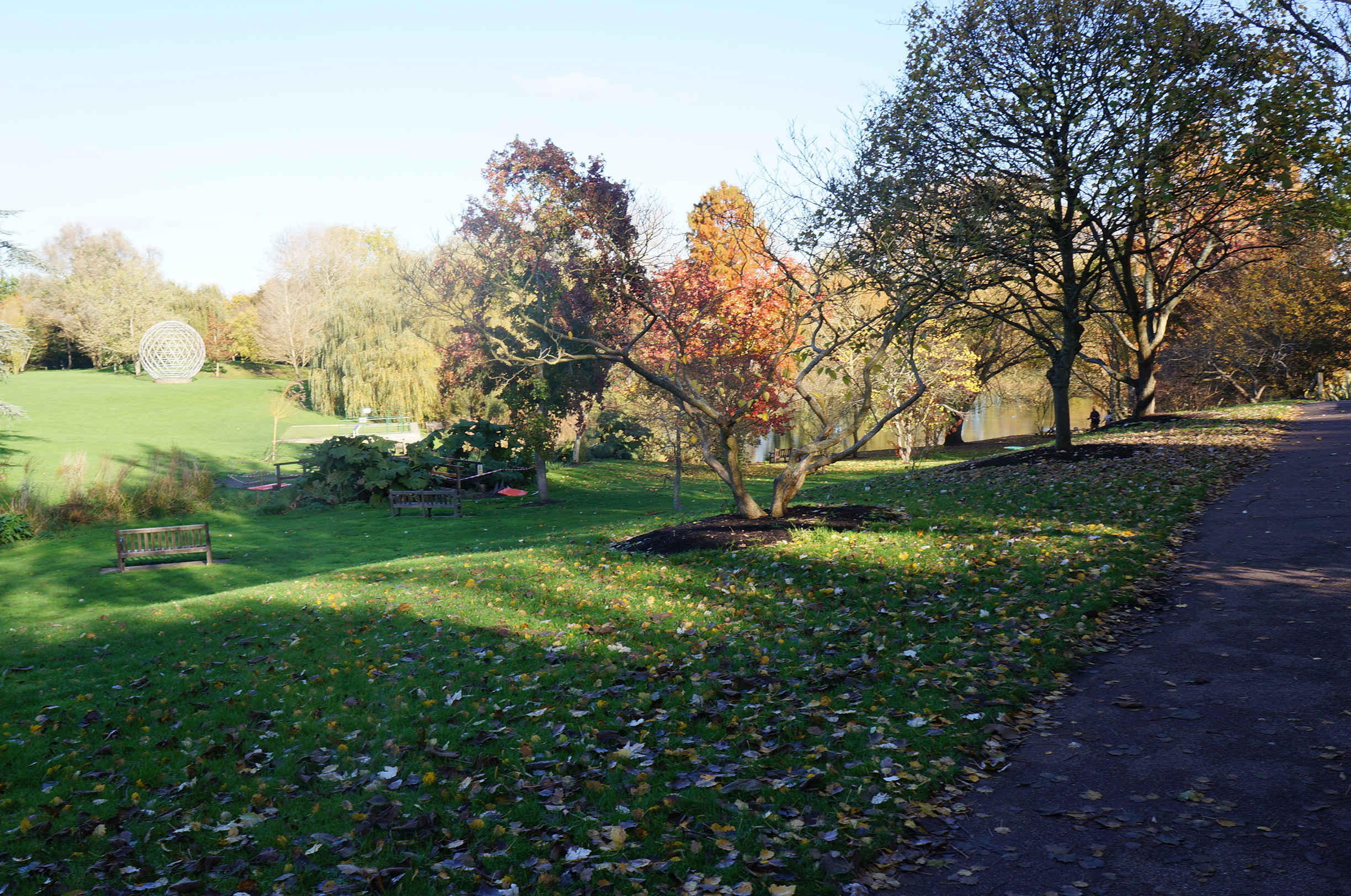
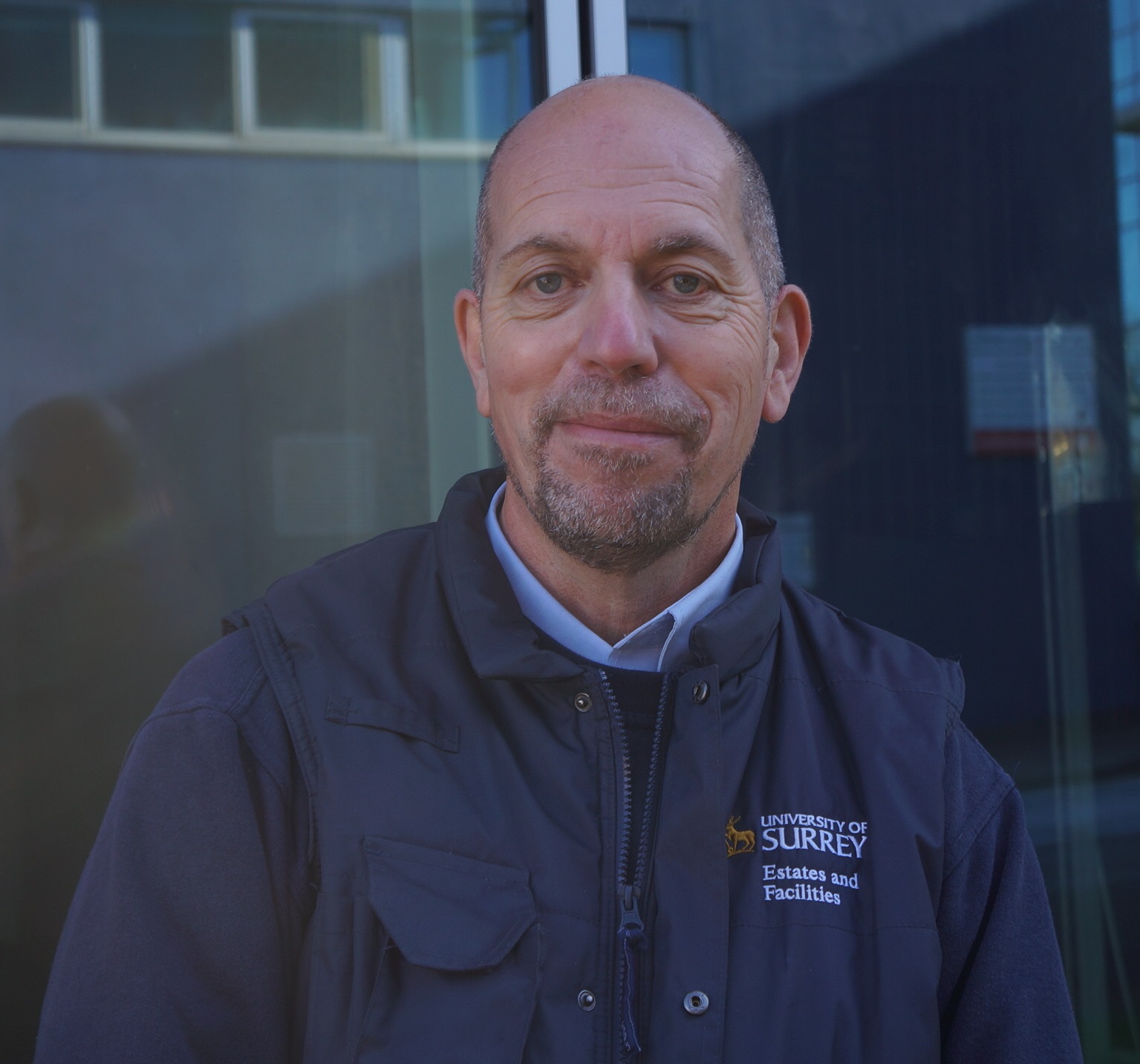

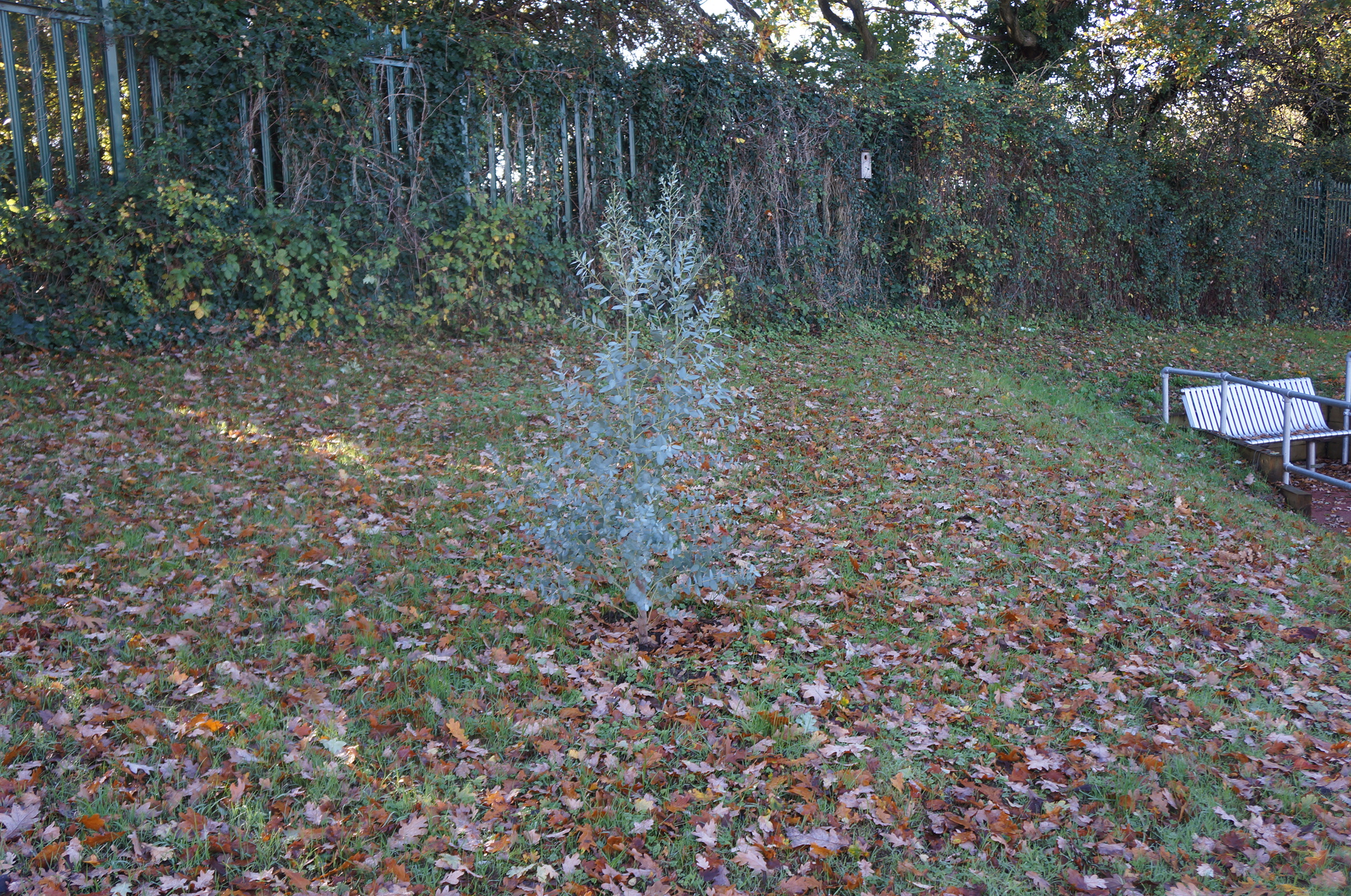
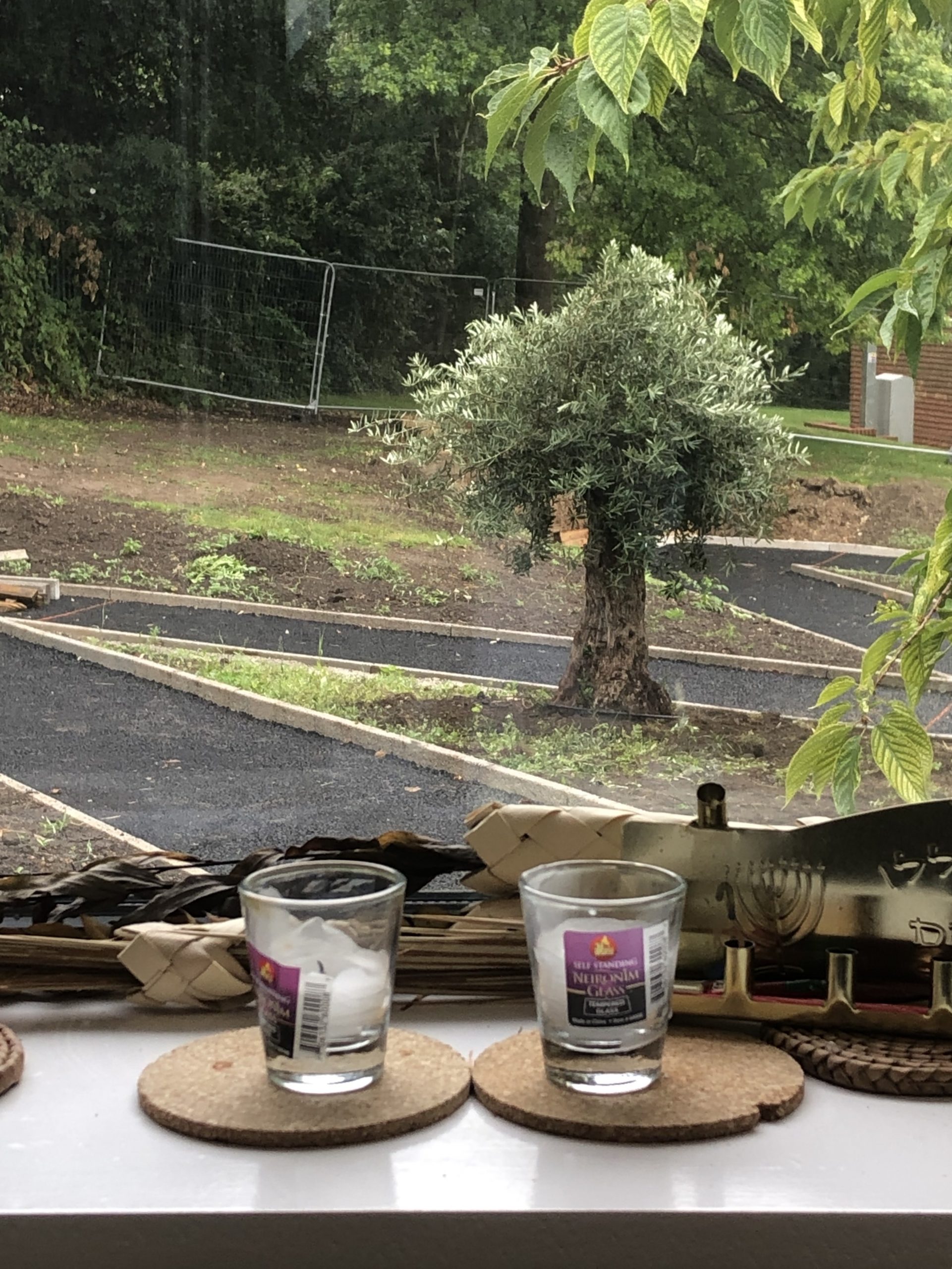
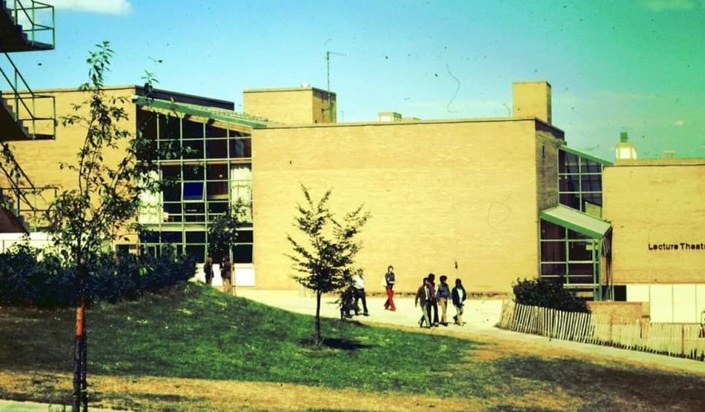
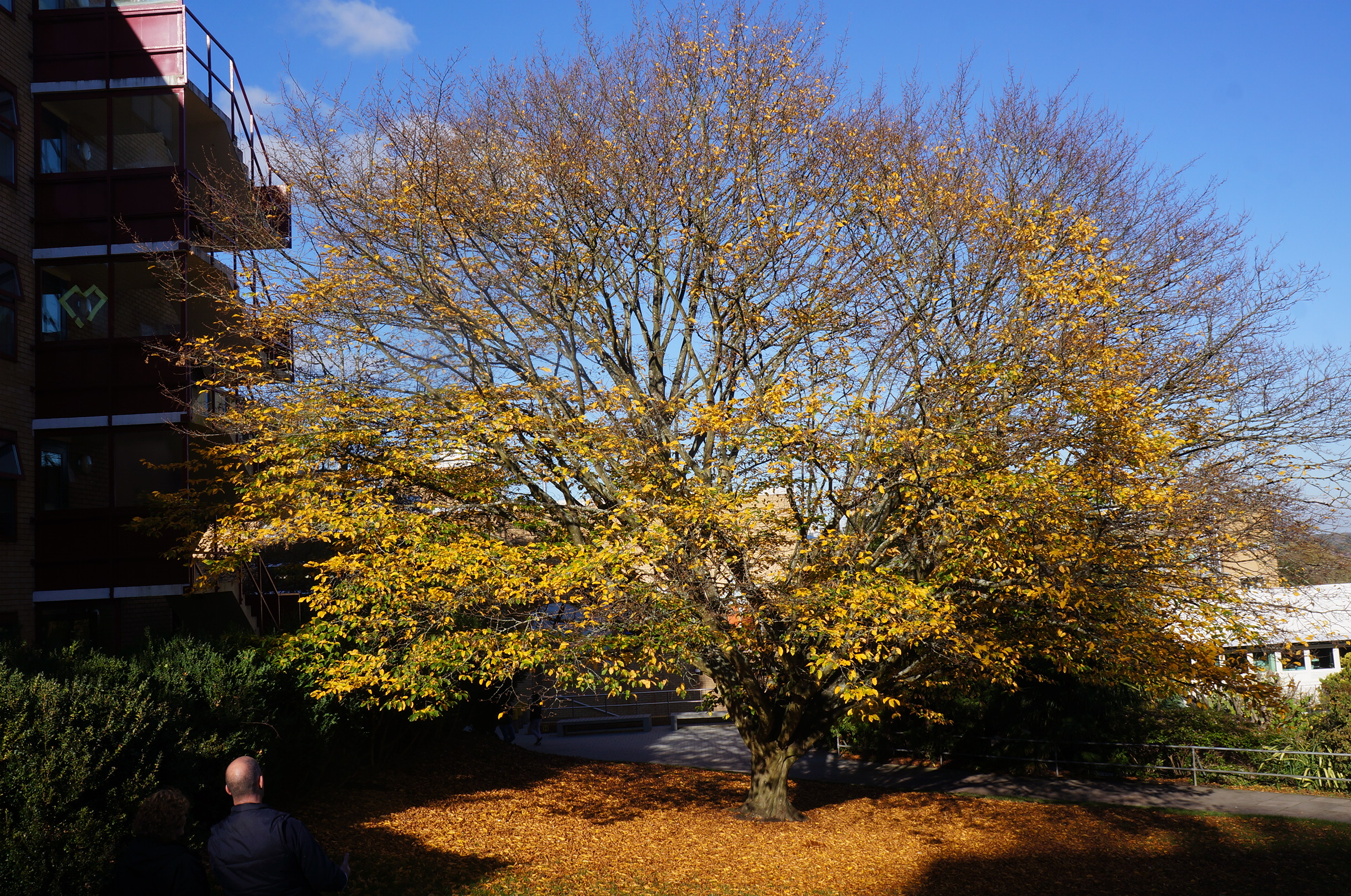
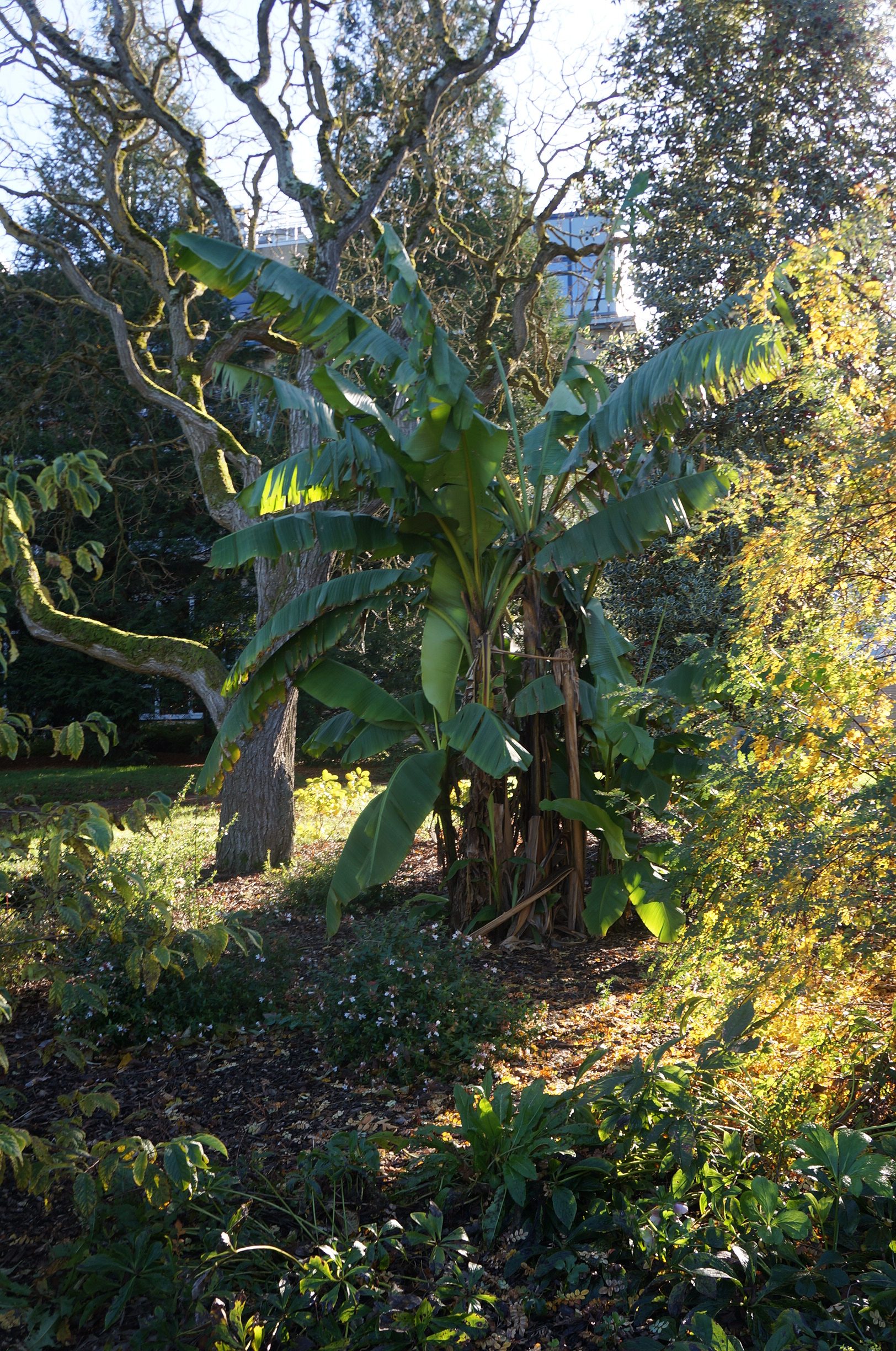








Jules Cranwell
November 9, 2020 at 11:15 am
Since they are so proud of their trees perhaps they will now spare the trees at Blackwell Farm by cancelling their plan to sell it off to developers.
Bill Dewey C.Eng
November 9, 2020 at 11:47 am
As most of Stagg Hill is on clay most of the buildings are on piled foundations and so relatively unaffected by tree roots. Long may they remain so.
Bill Dewey is a structural engineer
Des O'Byrne
November 9, 2020 at 3:30 pm
I hadn’t realised just how many trees and different tree species grew around the University of Surrey site. This article was fascinating and after reading it, I began to wonder if Simon Smith or any of his staff offered guided walks around the university grounds?
Perhaps if they don’t, it is something they might consider doing for Heritage Open Days next September? I’d love to hear an expert like Simon sharing his knowledge.
Barbara Howarth
November 9, 2020 at 4:12 pm
I used to work at the university and enjoyed several of the organised “tree walks”. Conducted annually, I think. Let’s hope next year they can resume.
Professor Costas Ioannides
November 10, 2020 at 10:54 am
Commencing at Battersea, I have been at the University of Surrey from 1969 until my retirement in 2015.
On moving to the Stag Hill Campus I clearly recall Gordon Hartman, a lecturer in Biochemistry, whose enthusiasm and love for trees is undoubtedly largely responsible for the many mature trees that embellish the campus, that we can now all enjoy.
While still a PhD student in the final year of my studies, I still remember vividly Gordon waking me up on a Sunday morning (I was living in Tillingbourne, Surrey Court at the time) to reluctantly plant a tree as I had apparently consented to do. I feel so proud every time I go to the university to see this tree, now some 50 years old, thriving and being part of probably the most beautiful university campus in the UK. Thank you Gordon.
Miloslav Dobrota
November 11, 2020 at 1:47 pm
I am disappointed that Gordon Hartman’s name was omitted. Yes, in the early days of the almost ‘bare’ campus Gordon recruited us to come in at weekends to plant trees. One story of our efforts was the tiger spruce planted by the path from the car park towards Senate House. Despite its’ vicious needles, the students (they got the blame) nicked it that Christmas. We planted another and when that disappeared the following Christmas we decided no more Tiger spruces.
Also missing is any mention of two plaques which commemorate a hundred or so notable trees donated in the names of late members of staff and students. One plaque is located near the bus stop the other by the path leading to the lake. These were bequeathed to the university by Dr Eric Reid in memory of Gordon Hartman who sadly passed away in 2004 just a couple of years after his retirement.
Dear Gordon is much missed and fondly remembered by all who knew him.
Editor’s response: Gordon Hartman wasn’t mentioned to Hugh Coakley. But please do send in your memories or photos of him.
Sue (Bennett) Neech
November 11, 2020 at 3:06 pm
Well done Simon Smith for continuing the vision my Dad many years ago. We are so very proud of you. And the grounds, especially some of the trees, look breathtakingly beautiful.